It feels like summer has turned to winter without blinking for autumn. Yet only last week I was picking white grapes here in the Alazani Valley, in the heart of Georgia’s primary wine-growing region, Kakheti.
I’m feeling fortunate and thankful I was able to find some grapes to continue my challenge of making eight wines in four countries in one vintage. The 2022 harvest was almost over in the east of Georgia when I landed from my harvests in Slovenia, Austria and Hungary, but it wasn’t until I saw the snow on the mountaintops and the migration of farm animals that I realised how close I came to missing out.
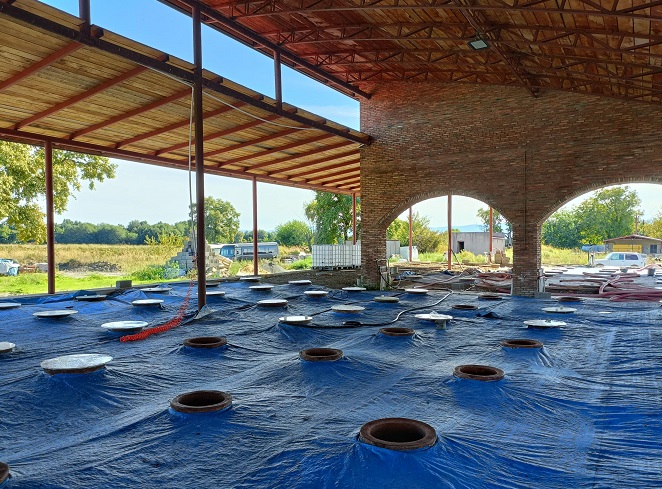
I hadn’t helped my cause by insisting on making an amber wine in a qvevri using lesser-known Georgian grape varieties – basically I wanted to avoid Georgia’s ubiquitous grapes, the high-yielding white Rkatsiteli and red Saperavi, planted to satiate the Russian market. There’s nothing wrong with them – but I didn’t want too much competition for my one-qvevri wine.
Picking white, aromatic grapes so late in the season – when some of the Saperavi in the marani was already undergoing malo – created two problems, which steered the course of this wine:
- The grapes came in with 15% potential alcohol. Would native yeasts struggle in such an environment?
- The grapes appeared healthy, apart from a little sunburn, but were they healthy enough for six months of skin contact in a qvevri?
I had come to Georgia expecting to make a natural, low-intervention wine using ancient winemaking techniques, but this amber wine is going to be the most high-tech of the wines made during my crazy #harvest2022 adventure.
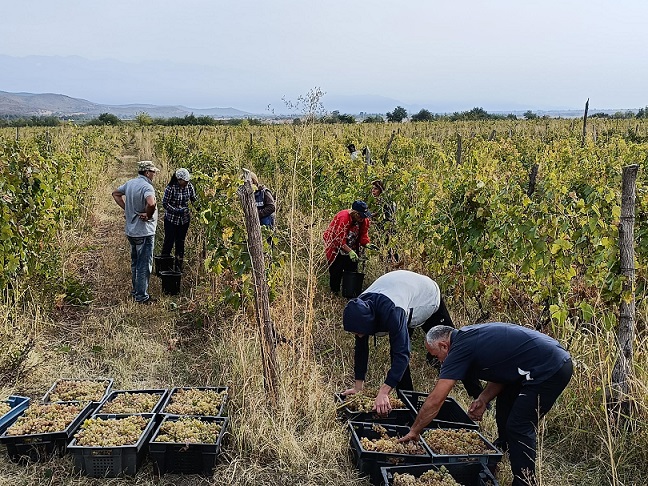
The more I thought about it, the more I liked the challenge of making a faultless amber wine in a qvevri in Georgia. A qvevri wine without any oxidative notes. A skin-contact qvevri wine that retained some of the lovely aromas of the two grape varieties we picked in a 7ha vineyard near the village of Argokhi (above). Just as many of the Rkatsiteli vineyards contain Mtsvane, many of the older Kisi vineyards also contain Khikhvi. While I try to learn the differences between the two early-ripening, floral, aromatic white varieties, the vineyard owner estimates my field blend will be 80% Kisi (below) and 20% Khikhvi.
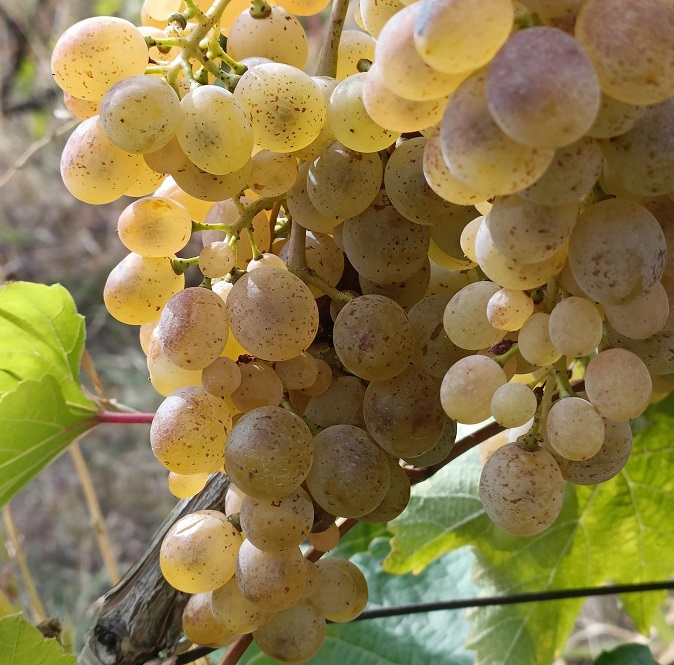
These are both great Georgian grape varieties, whose time is coming. Indigenous to Kakheti, they can produce elegant European-style whites or layered amber qvevri wines in the traditional Georgian way.
The versatile Khikhvi (below), which has been around since the Middle Ages, can also produce semi-sweet, dessert and fortified wines (especially in the Kardenakhi PDO).
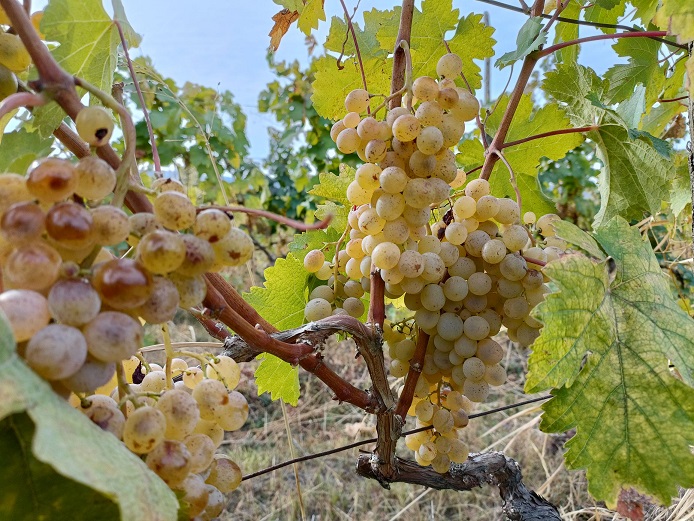
But in the rest of Kakheti they were harvested two or three weeks ago. In this vineyard in Argokhi, they have been left on the vine to gain more sugar and richness (and a higher price). They look clean and healthy but we’re not going to take any chances. This is ‘belt and braces’ winemaking; textbook stuff. We’re going to use all the tools of conventional winemaking. Perhaps it’s overkill. It’s certainly not how I expected to make a qvevri wine in Georgia.
Making wine in a clay vessel buried in the ground is a technique preserved in Georgia for thousands of years. It became part of Georgia’s identity through invasions by Persians, Romans, Ottomans, Mongols, and Soviets. In 2013, UNESCO added qvevri winemaking to its list of Humanity’s Intangible Cultural Heritage and, in 2021, qvevri was granted Protected Geographical Indication status, legally establishing Georgia as the place of origin and codifying its shape, capacity, raw materials and production method.
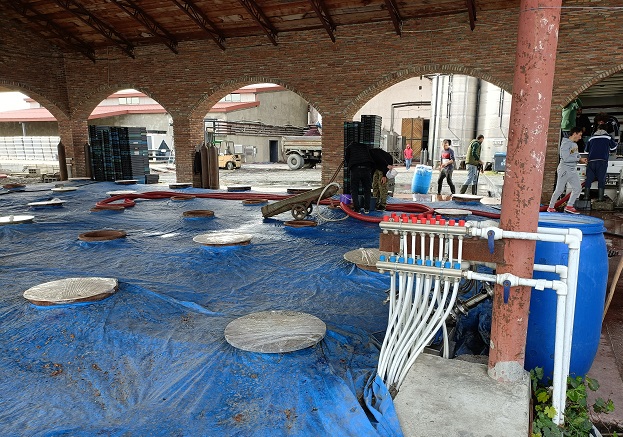
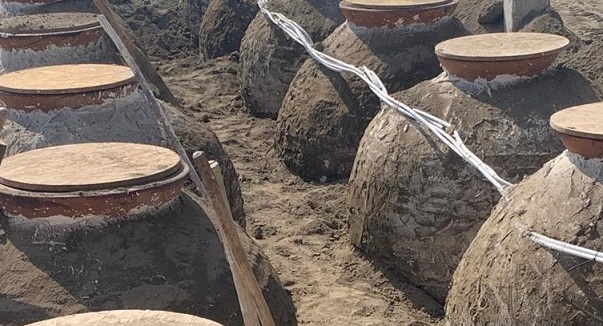
At Kindzmarauli Marani – part of the large Teliani Valley group – they are using the most modern qvevri-winemaking techniques. These include:
- Chilling the qvevri. Even though they are buried in the ground, the qvevris at Kindzmarauli Marani can be temperature controlled through cooling tubes (shown above before the qvevris' burial). When I arrive from the vineyard with 204 crates of mixed grapes, the two qvevris I’m using for the fermentation have already been set at -1°C. This means the grapes in the centre of the qvevri will be around 10°C while they adjust (for 24 hours) to their new life in clay.
- Keeping the cap submerged with French oak staves (see below).
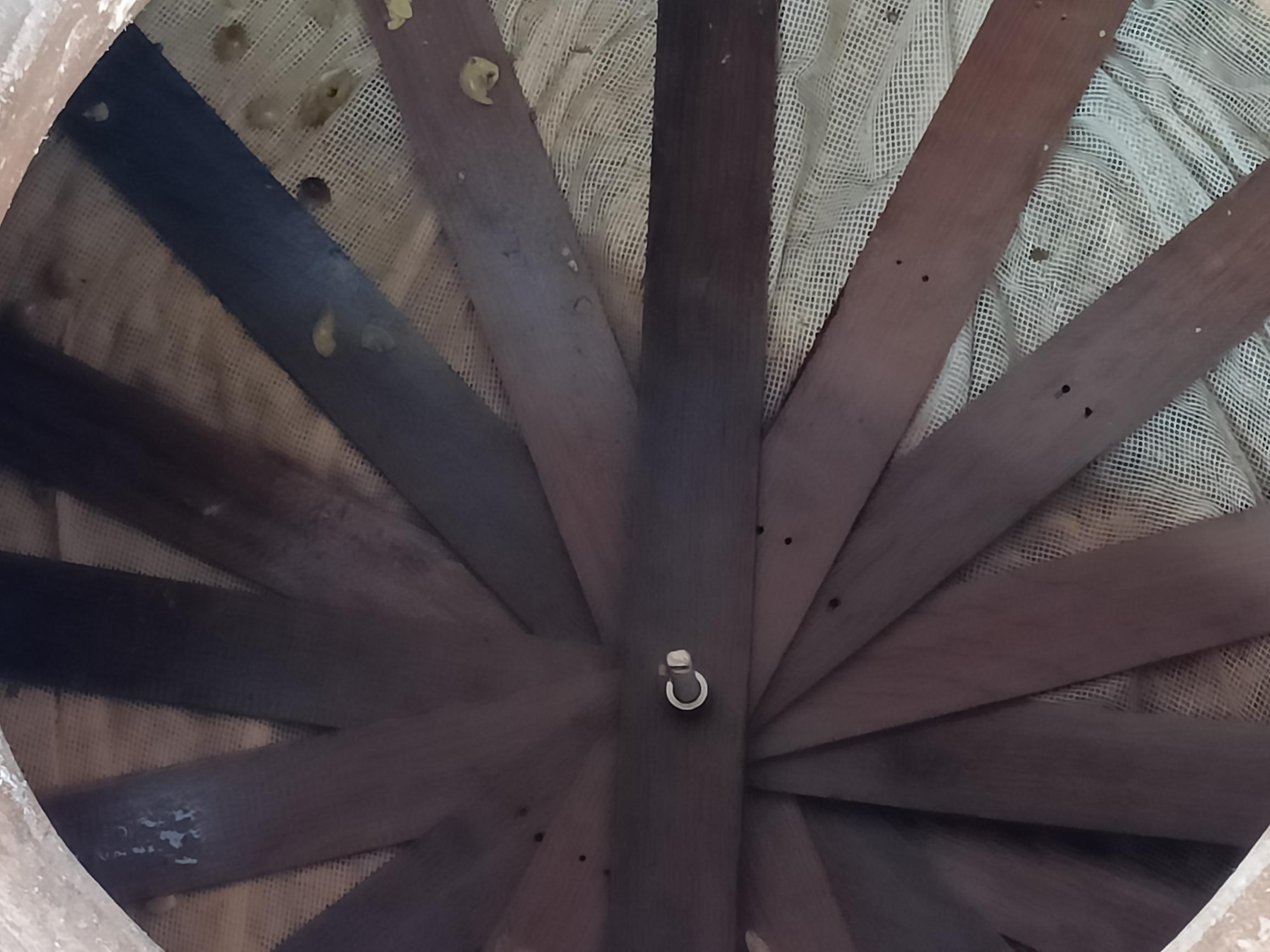
Jumping out of the van which transported the grapes, I notice a young man who looks like he’s preparing to deal with a chemical spillage. He’s wearing fisherman’s waders, a hood, boots and gloves. He’s getting scrubbed with a brush and hosed down.
He’s the man going into my qvevris to clean them. When planning this leg of my project, I had imagined jumping in the qvevri myself and scrubbing the walls with pieces of cherry bark attached to a long pole, but things have moved on here. At Kindzmarauli Marani, Mikheil and his team don’t take any chances as far as hygiene is concerned. The man going into the qvevris to clean them is even piggybacked to the rim to keep his boots clean.
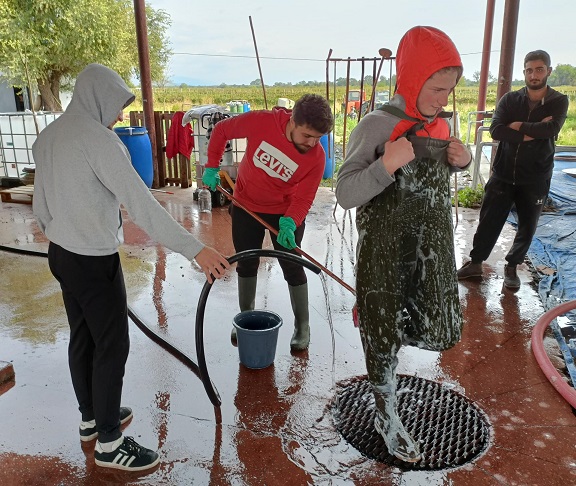
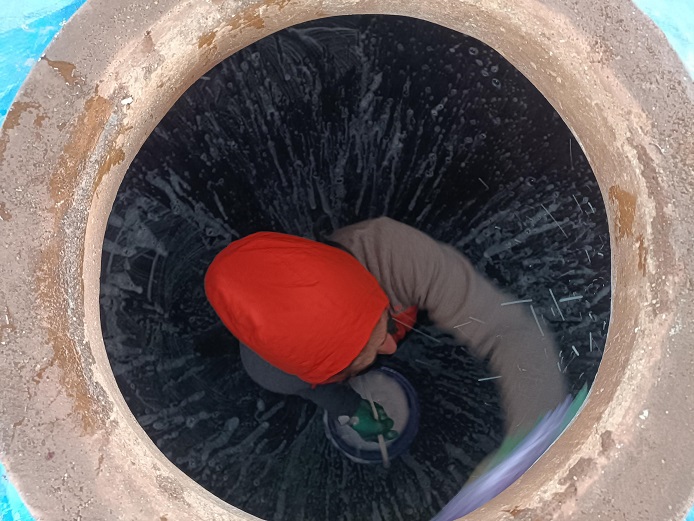
He lowers himself into the qvevri and disappears. First, he washes the inside with what they call ‘wine foam’ (basically a caustic soda solution). The qvevri is then rinsed with water, then with citric acid and then with ethanol. A sponge on a long pole is used to remove the water that can’t be pumped out. They wait ten minutes and then return to take out any newly formed puddle at the bottom of the qvevri. Then the rim is thoroughly cleaned again.
Video: How to clean a qvevri
- After cleaning, the qvevri is purged of oxygen with CO2.
- The crates are unloaded into the destemmer, and whole berries are pumped into the qvevris. Enzymes, citric acid and sulphur are added as we can’t guarantee the health of every bunch of grapes. I know the ones I picked were healthy and free of damaged berries, but were the other pickers as picky?
- The additions are mixed into the must by pumping it with CO2 bubbles.
- The must is left overnight before turning the temperature up for a fermentation at 19-20°C and inoculation the next day with IOC RP15, a yeast for red wines. The yeast and nutrients were, again, stirred through with CO2 bubbles.
Video: Goodbye punchdowns
The device comprises eight thin French oak staves joined by a single stainless-steel bolt, and some netting. We removed some of the must so we could fit the device on top of the cap at the qvevri’s widest point. The netting was laid on top of the skins, then the staves were fanned out like the spokes of a wheel. A slit was made in the netting to make life easier for the lab technicians when they take their sugar readings (daily) and pH and TA readings (every other day). The rim of the qvevri was marked as a guide.
A nozzle was inserted into the slit and the must returned. As the cap rises, the contraption is pushed up, so it neatly fits to the walls of the qvevri and will bow upwards – keeping the cap submerged and gently pressing the grapes.
Once the fermentations finish, they will be inoculated for MLF.
The plan is to remove the skins in February or March, only keeping the free run for this wine (the skins will be pressed for a lower-tier wine or distilled for Georgia’s traditional spirit for toasts at feasts, chacha). The wine will then be returned to a clean qvevri for natural clarifying and maturation until August.
The qvevri will be sealed in the traditional way with wax or clay – but with a layer of nitrogen filling the headspace. It’s not how they did it thousands of years ago, but even an ancient technique like qvevri-winemaking needs an update every few millennia.
‘Even an ancient technique like qvevri winemaking needs an update every few millennia’


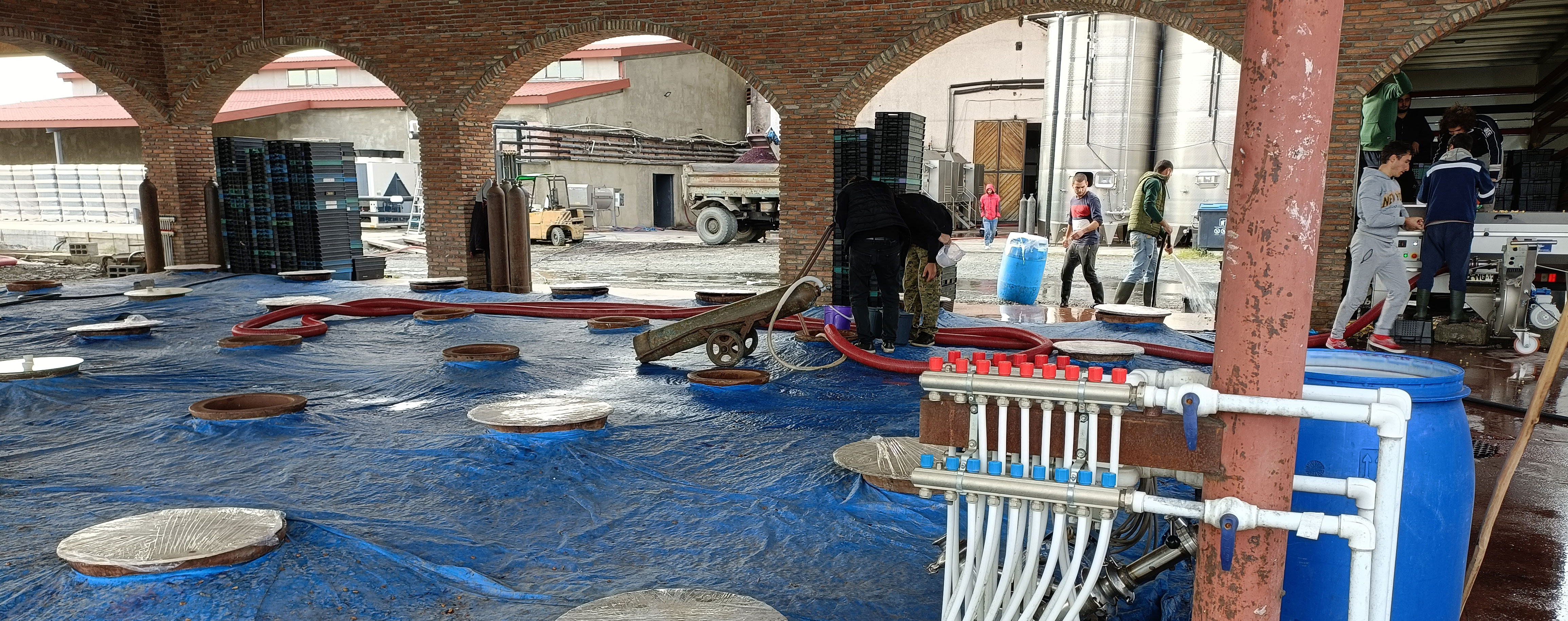










.png)






